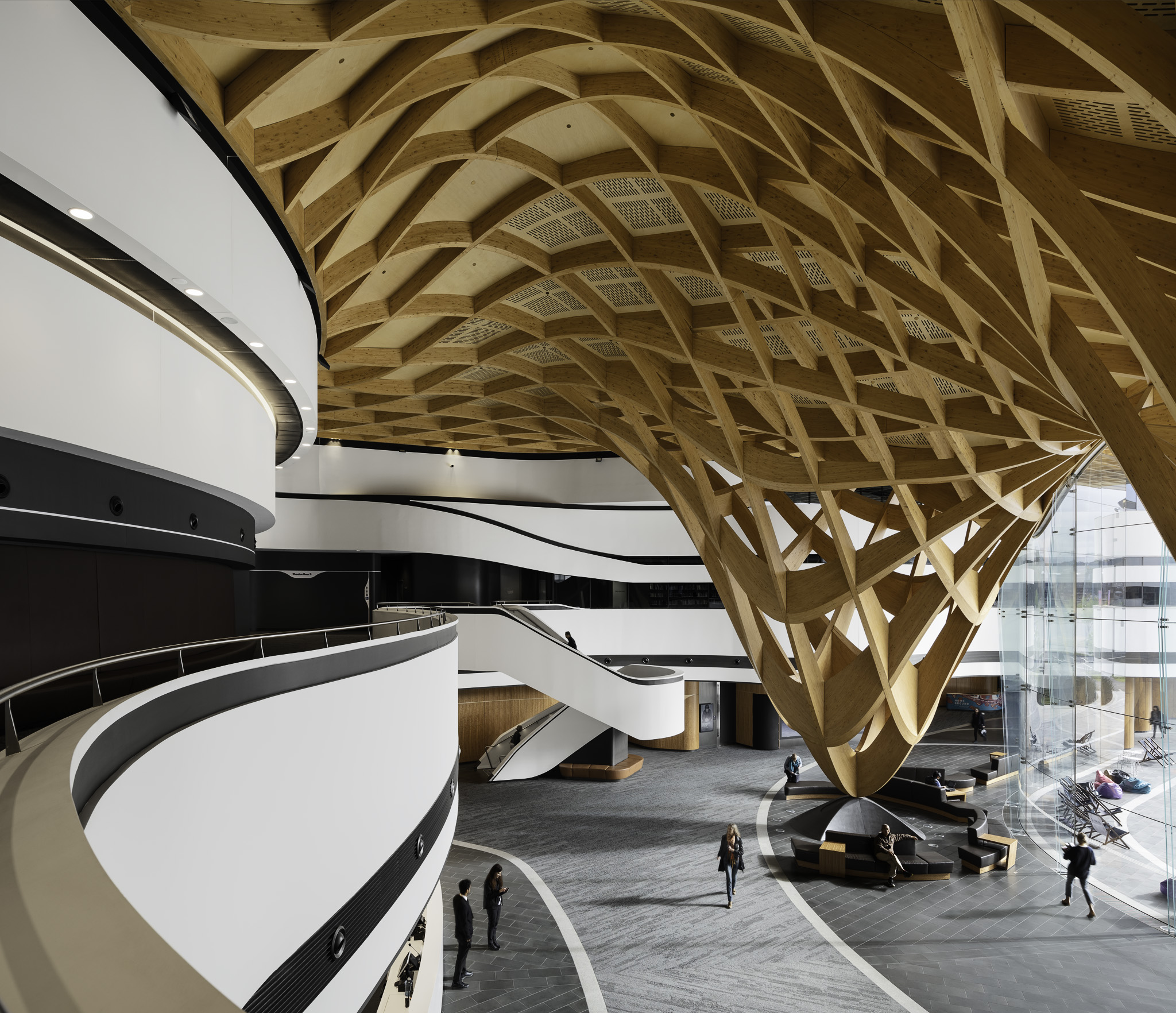Process
Finding the image
Making an image of architecture is a distinct creative process that seeks to support and celebrate the architects creative vision, whilst also taking into the fold the life/context/usage of the building in the present moment. A large difference between taking a photograph of a building and making an image of architecture is taking the time to determine and distill what the image will convey. I consider a range of things when choosing a composition for an image including the use of innovative design elements that make a space unique, tie it together or help it to stand out.
Finding the right place to put the camera is a carefully considered process, that can take some time, and often involves many very small adjustments that make a big difference to the final image.
Setting the scene
Most spaces are populated with furniture and items that have a range of uses or purposes, they don’t necessarily add to the story of an image, and some that look great as you walk through a space, don’t always work in the two-dimensions of a photographic image.
With permission I carefully adjust or remove the items within an image to ensure that the elements work to create the desired scene. Millimetres and degrees of rotation matter here and moving one item may mean that I have to go back and forth adjusting others, its the relationships between items that make all the difference. I use specialised equipment for making this process as efficient and accurate as possible.
Lighting the space
Light makes a huge difference in mood, where attention is drawn, and how we use a space. I aim to find a way to allow the space to show itself in its best light, but I also find creative ways to use this light to create the depth in the scene, and show the shape and form of the elements within the space.
Sometimes this involves being in the right place at the right time, which is not left to luck alone (though it helps!). I plan my shoots ahead of time using technology that helps to predict where light will fall and how it will shape a space/building.
Other times, I use different techniques to influence the light in a scene, whether that be adding light using modern studio lighting that I bring on a shoot, or more traditional methods for subtracting, softening or shaping existing light.
When possible, I will scout a shoot in advance so that I can plan a shooting schedule that will allow me to get all key shots in the best light available.
Capturing and producing an image
My image-capturing process involves taking a series of images across a period of time, making adjustments to lighting for various areas and elements in the scene and I often take multiple exposures with people or vehicles moving within the scene. My images comprise several carefully considered exposures that are blended in post-production to produce the final image. My process is aimed to produce images that can be printed at large scale and in fine detail.
I use up-to-date equipment which allows me to produce images of the highest quality. I have a backup for every item, so there is no stopping me.
In a day’s work
A normal shoot day will start early, sometimes before sunrise, and will nearly always finish after sunset. This is necessary in order to capture your work in the best light available, and can produce stunning results. With each image following all of the above steps, you will understand that quality photography takes time. Generally, I allow a significant amount of time to capture each image. There will be times during the day that I am not making images, but stepping back and planning for the light that will develop later in the day, when things tend to happen more quickly. Other times we have everything set up ready and are waiting for the light to produce its magic. My challenge is to produce a thoughtfully curated set of images, rather than to see how many images I can make in a day.





